Picking the right wood siding for your home can feel like a big decision. There are so many types to choose from, and each one has its own look and feel.
Some are smooth and modern. Others are more rustic and textured. I know it can get confusing fast. I’ve been there too, reading all the names and not knowing what makes them different.
That’s why I put together this easy guide. I’ll walk you through the most popular types of wood siding, what they look like, and what makes each one special.
You’ll also learn a bit about how they hold up over time and what kind of care they need.
By the end, you’ll have a much better idea of which wood siding fits your home and your needs. Let’s get started!
What Is Wood Siding?
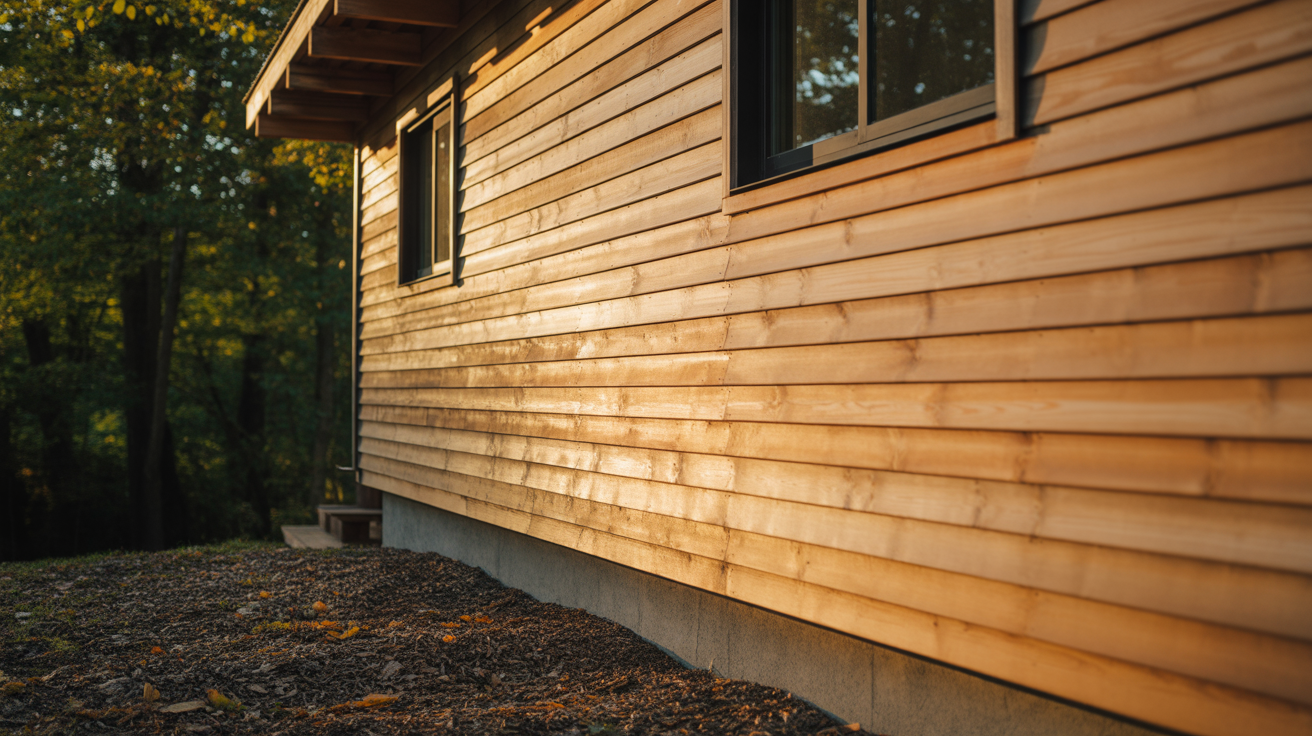
Wood siding is a type of material used to cover the exterior of a house. It protects your home from the weather and adds style.
It’s made from real wood, and people like it because it has a warm, natural appearance. Some wood siding looks smooth. Others show off the wood grain or have a rough texture.
You can find wood siding in a variety of shapes and styles. Some go on flat, while others overlap or interlock. It’s a popular choice for cabins, cottages, and even modern homes. But not all wood siding is the same.
Different types work better for various homes and weather.
Types of Wood Used for Siding
Not all wood is the same, and the type you choose can make a big difference in how your siding looks, lasts, and performs. Below are the most common types of wood used for siding:
1. Cedar

Cedar is one of the most popular choices for wood siding, and for good reason. It’s naturally strong and holds up well in harsh weather. Cedar also has oils that protect it from insects and rot.
- Color: Ranges from light brown to reddish tones. It weathers to a silver-gray if left untreated.
- Texture: Comes in smooth or rough-sawn finishes.
- Durability: Very durable and long-lasting.
- Maintenance: Needs regular sealing or staining to keep its color.
- Best For: Wet or coastal areas where rot and bugs are a concern.
Why Pick Cedar? It’s strong, beautiful, and holds paint and stain well. It’s also lightweight, which makes it easier to install.
2. Pine
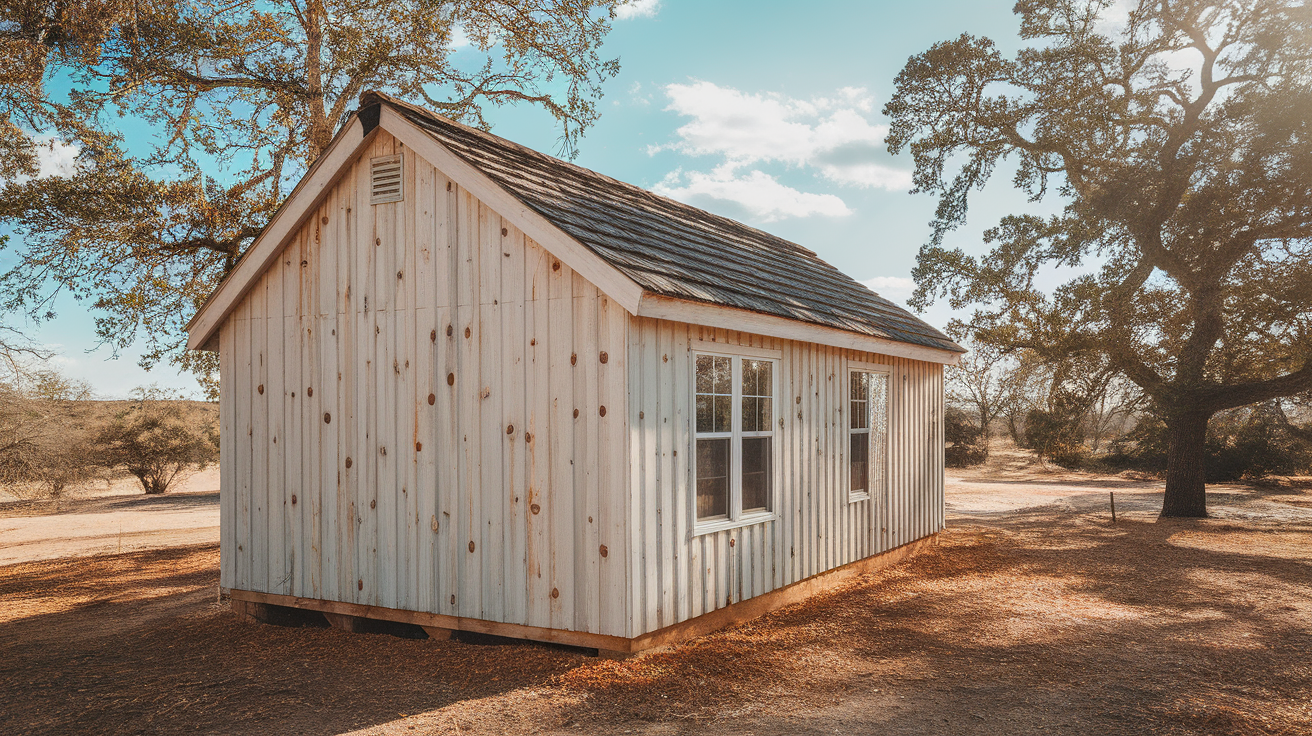
Pine is a softwood that is often more affordable than cedar or redwood.
It’s easy to cut and install, which makes it a favorite for DIY projects. But it does need protection from moisture and bugs.
- Color: Light yellow or pale tan.
- Texture: Smooth surface with visible knots.
- Durability: Less resistant to decay than cedar or redwood.
- Maintenance: Needs to be painted or sealed often.
- Best For: Dry climates or areas with low moisture.
Why Pick Pine? It’s a budget-friendly choice and works well if you’re willing to keep up with maintenance.
3. Redwood
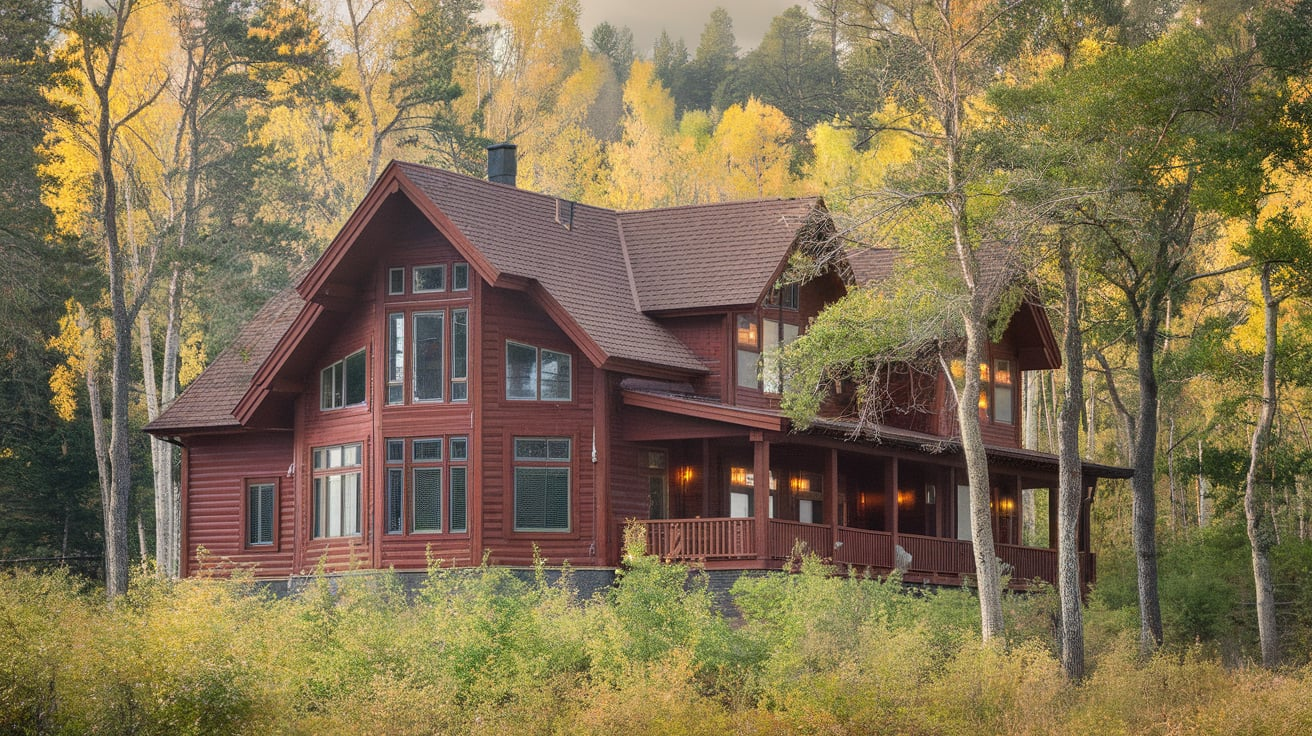
Redwood is one of the highest-quality wood siding options.
It looks amazing and performs well in wet weather. Like cedar, it has natural oils that keep out bugs and moisture.
- Color: Rich red to deep brown.
- Texture: Very smooth and fine-grained.
- Durability: Extremely long-lasting.
- Maintenance: Less frequent upkeep compared to other woods.
- Best For: Coastal regions, mountain homes, or anywhere with lots of rain.
Why Pick Redwood? It’s beautiful and tough. You won’t need to worry as much about rot or warping.
4. Douglas Fir

Douglas fir is a strong, stable softwood with a tight grain that gives it a smooth appearance.
It’s a common choice for vertical siding like board-and-batten or tongue-and-groove panels.
- Color: Light brown with a touch of red or orange.
- Texture: Fine and even grain.
- Durability: Strong but needs protection from moisture.
- Maintenance: Needs paint or stain every few years.
- Best For: Homes in dry or mild weather zones.
Why Pick Douglas Fir? It’s solid and clean-looking. It’s also one of the easiest woods to work with.
5. Spruce
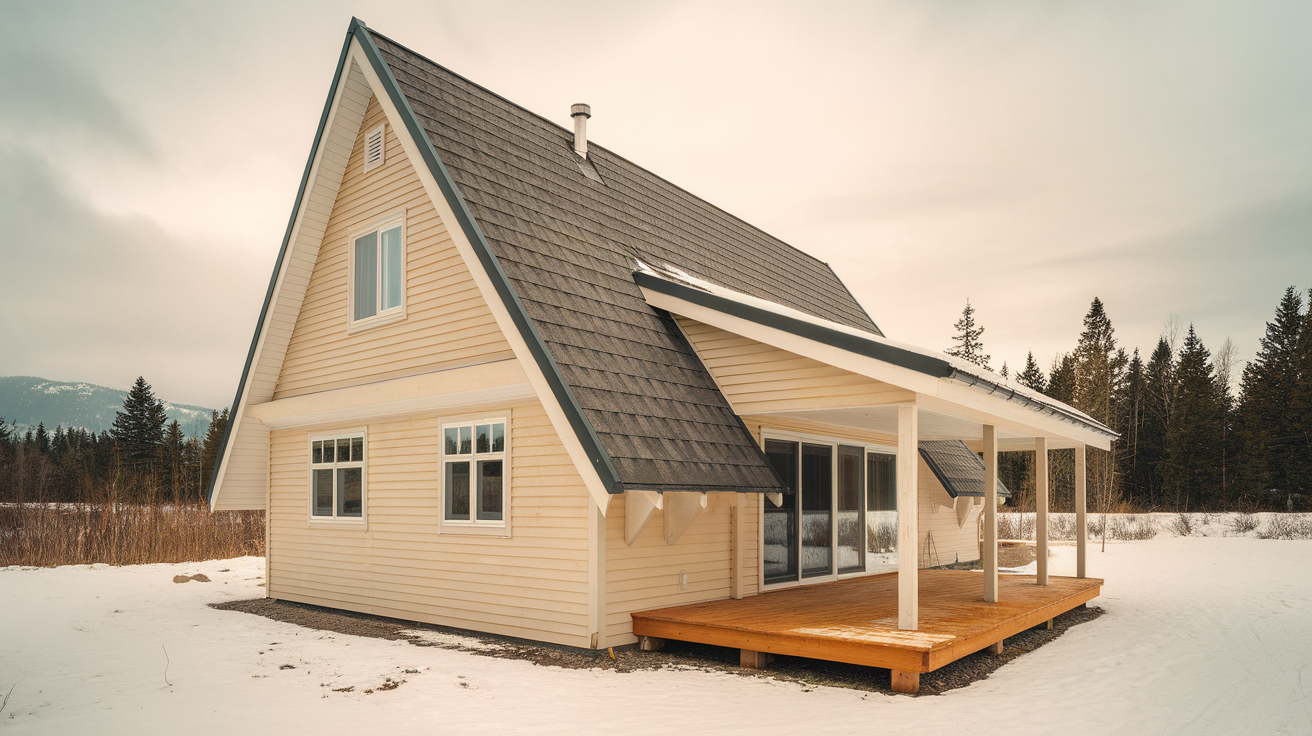
Spruce is another softwood that’s often grouped with pine.
It’s not as durable as cedar, but it’s widely available and cost-effective. It’s often used in clapboard and lap siding.
- Color: Pale white to light yellow.
- Texture: Fine grain and even tone.
- Durability: Fairly low, especially in wet conditions.
- Maintenance: Requires regular painting or staining.
- Best For: Interior siding or dry regions.
Why Pick Spruce? It’s simple, smooth, and very affordable, but only if you’re willing to perform regular maintenance.
6. Cypress
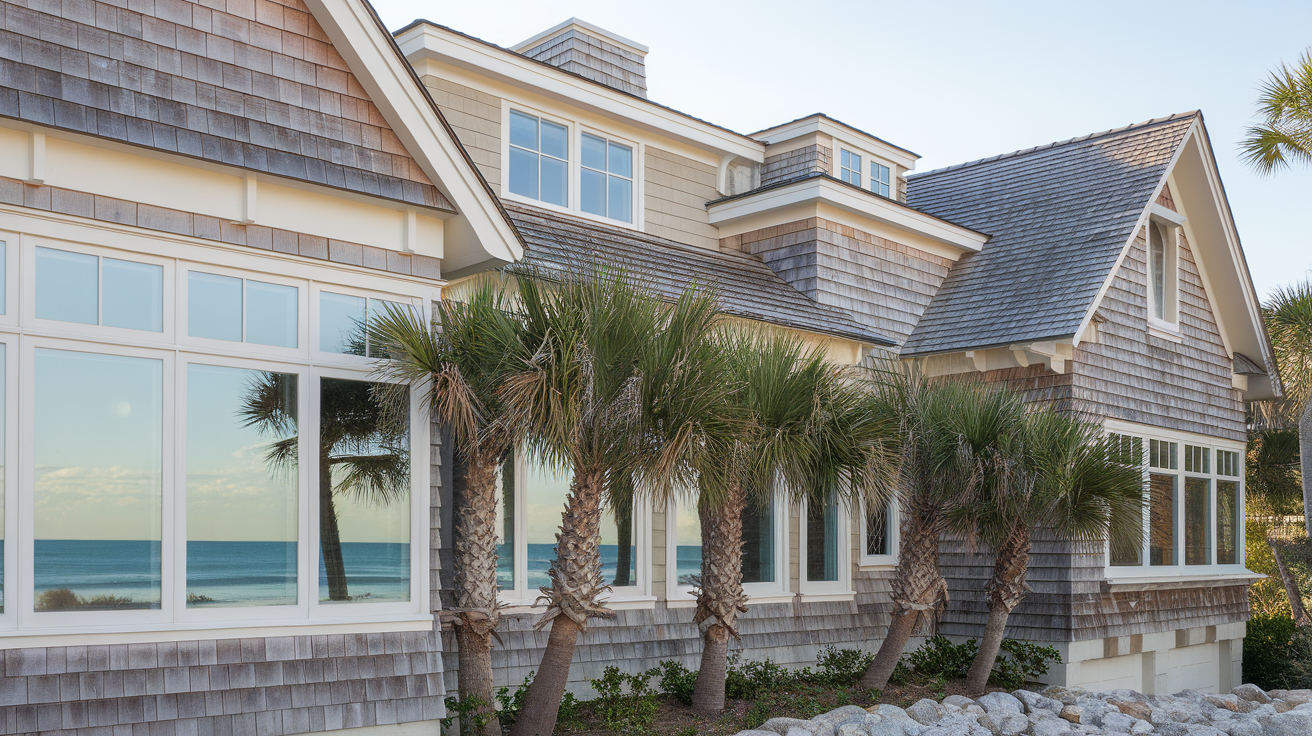
Cypress is a hardwood that’s less common in some areas, but it’s a solid pick if you can get it. It naturally resists rot and insects.
- Color: Pale yellowish-brown to light reddish tones.
- Texture: Straight grain, sometimes with knots.
- Durability: High, can last for decades if cared for.
- Maintenance: Minimal sealing or staining needed.
- Best For: Humid or coastal locations.
Why Pick Cypress? It’s very strong and naturally weather-resistant, even without a lot of upkeep.
7. Hemlock
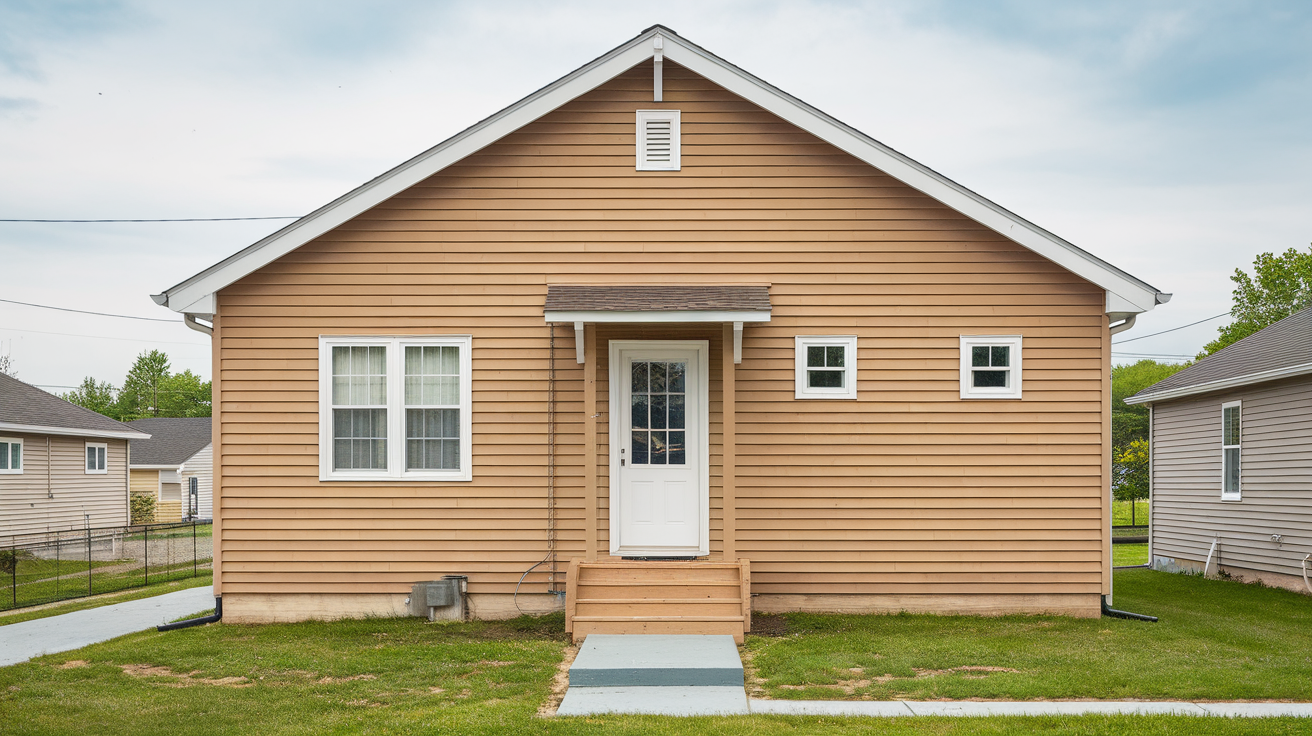
Hemlock is a softwood used in some siding applications. It’s not as popular as cedar or fir, but it’s still available in certain areas. It offers a smooth finish and is usually cheaper.
- Color: Light brown with a yellow or orange tint.
- Texture: Fine and straight grain.
- Durability: Moderate, needs paint or stain to last.
- Maintenance: Regular maintenance is required.
- Best For: Budget-friendly builds in mild climates.
Why Pick Hemlock? It’s a decent, low-cost option if you’re working on a budget and live in a mild area.
8. Engineered Wood
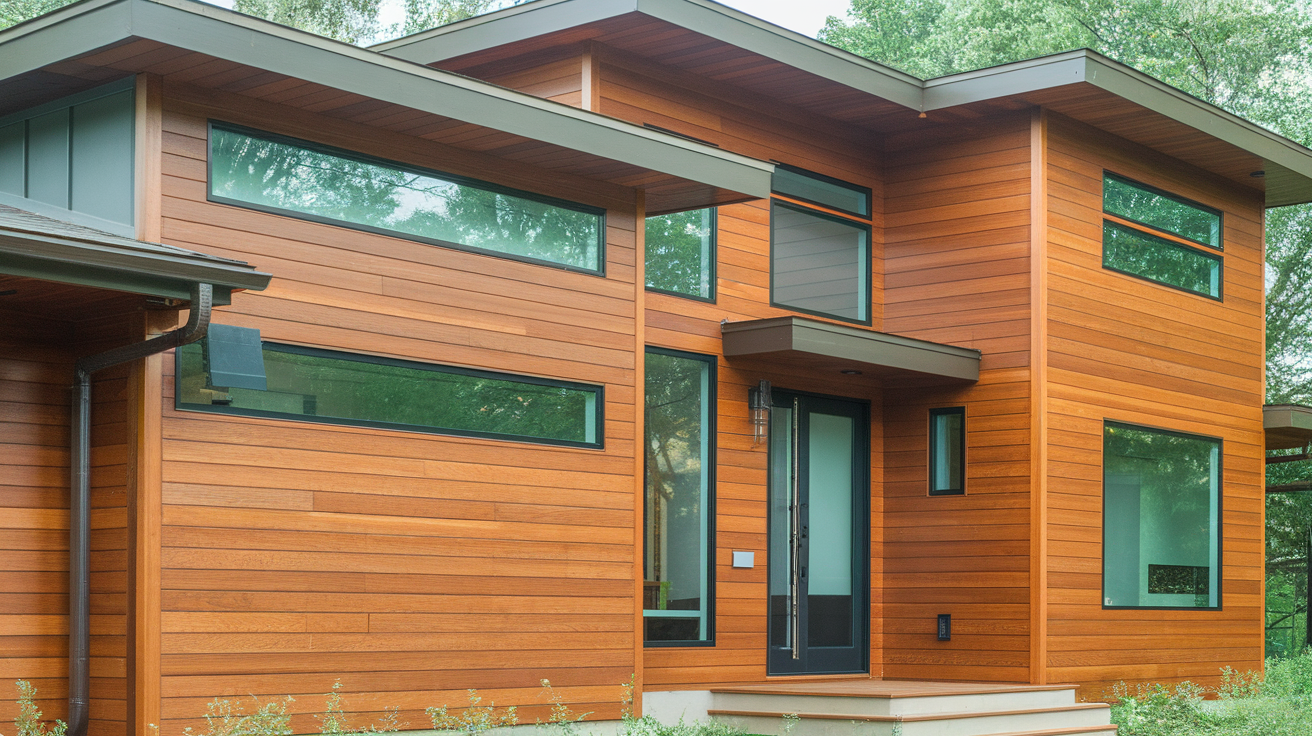
Although not solid wood, engineered wood is made from wood fibers and resins, and it looks like real wood but is more stable and often cheaper.
- Color: Comes pre-primed or pre-painted.
- Texture: Designed to mimic wood grain.
- Durability: High, resists warping and cracking.
- Maintenance: Low compared to real wood.
- Best For: People who want the look of wood with less work.
Why Pick Engineered Wood? It gives you the appearance of wood without the hassle. Great for busy homeowners.
Why Pick Wood Siding?

Wood siding is a popular choice for many homes. It’s not just about looks; there are real benefits that make it a smart option. Some reasons why wood siding might be right for you are:
- Natural Beauty: Wood has a warm, rich look that adds beauty and style to any home.
- Flexible Style: You can choose from many textures and shapes to match your home’s design.
- Paint or Stain It Any Time: Want a new color? Wood is easy to paint or stain, and you can change it whenever you like.
- Good Insulation: Wood helps your home stay warm in the winter and cool in the summer.
- Eco-Friendly Choice: When sourced from managed forests, wood is a renewable and green building material.
- Adds Value: Many buyers love wood siding, which can help your home’s value go up.
Wood siding brings both beauty and function to your home. If you’re looking for a natural, flexible, and smart choice, wood is hard to beat.
Popular Wood Siding Styles
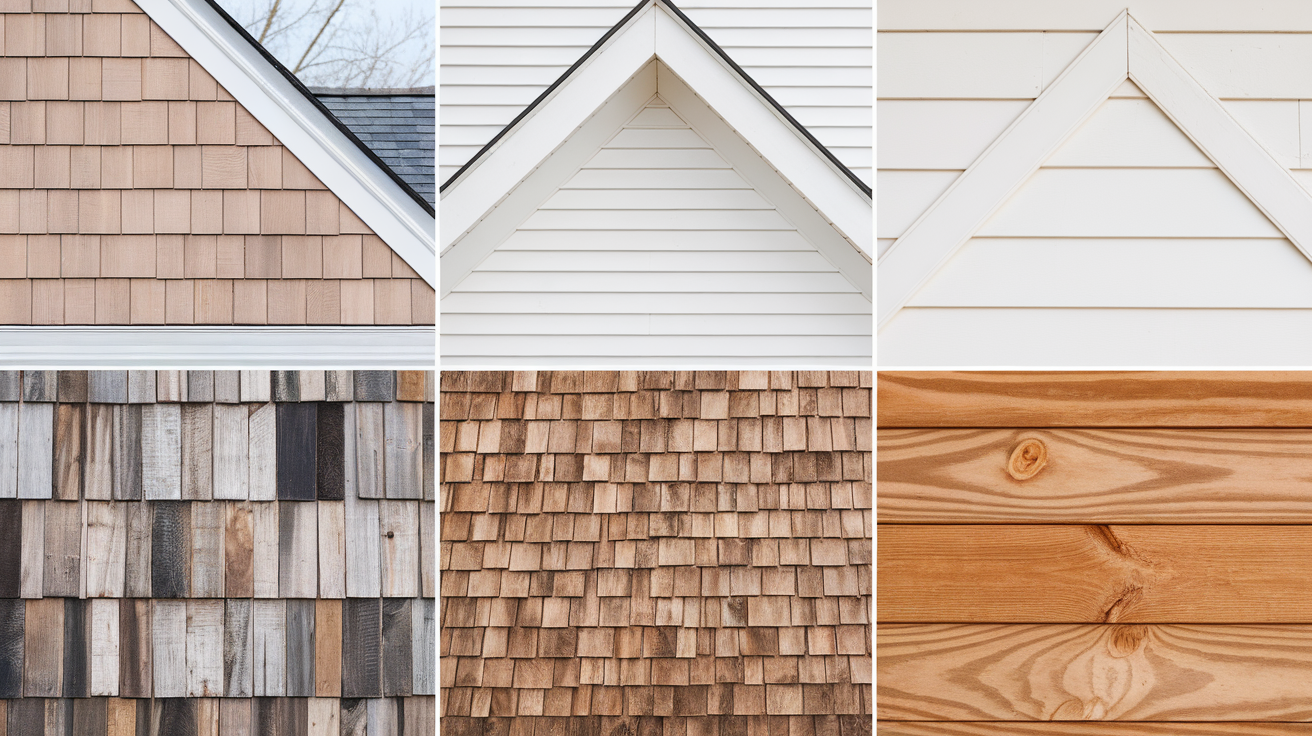
There are many ways to cut and install wood siding. These are some of the most common styles:
1. Clapboard (or Bevel Siding)
Clapboard is made of long, thin boards that overlap. The top edge is thinner than the bottom. It’s one of the oldest siding styles.
- Look: Classic, simple.
- Best for: Traditional homes
- Pros: Easy to install, sheds water well
- Cons: Can warp if not sealed right
2. Shiplap
Shiplap boards fit tightly together with a notch, or “rabbet,” on each side.
- Look: Clean lines, often used in modern or farmhouse homes
- Best for: Inside or outside walls
- Pros: Tight seal, strong design
- Cons: Can trap moisture if not installed correctly
3. Board and Batten
Wide boards are placed side by side, and narrow strips (battens) cover the gaps.
- Look: Rustic, vertical lines
- Best for: Barns, cabins, country-style homes
- Pros: Great for tall walls, hides gaps
- Cons: May need more paint or stain
4. Shake or Shingle Siding
These are small wood pieces, like roof shingles, placed in rows. Shakes are split by hand; shingles are cut by machine.
- Look: Textured, natural
- Best for: Coastal homes, Cape Cod style
- Pros: Very stylish, good for curves and corners
- Cons: Expensive, may require more upkeep
5. Tongue and Groove
Boards fit together with one side having a “tongue” and the other a “groove.” They lock tightly.
- Look: Smooth, even finish
- Best for: Modern or craftsman-style homes
- Pros: Tight seal, great indoors too
- Cons: Needs careful installation
Things to Consider Before Choosing
Before selecting your wood siding, consider a few key factors. These will help you select the right type for your home, budget, and lifestyle.
- Weather in Your Area: Some wood types thrive in dry environments. Others can handle rain, snow, or salt from the ocean. If you live in a wet or coastal area, pick a wood that resists rot and insects.
- Your Budget: Wood siding prices can vary a lot. Some types, like cedar and redwood, cost more but last longer. Others, such as pine or spruce, are less expensive but may require more maintenance over time.
- How Much Maintenance Can You Do: All wood siding needs care, but some types need more. Are you okay with painting or sealing it every few years? If not, choose a lower-maintenance wood.
- The Look You Want: Do you prefer a smooth and clean appearance, or something more rugged and rustic? Different woods and siding styles create different looks. Think about what matches your home’s style.
- Installation Needs: Some wood siding styles are easy to install. Others need a pro to do it right. This can also change the overall cost.
Taking time to think about these things will make your choice much easier. The right wood siding should fit your home, your taste, and your lifestyle.
Pros and Cons of Wood Siding
Wood siding isn’t just a material. It’s a story on your home’s walls.
I’ve seen wood siding that looks beautiful, and wood siding that looks like a maintenance nightmare. Let me break down the real deal for you.
| Pros | Cons |
|---|---|
| Natural beauty | Needs regular upkeep |
| Easy to paint or stain | Can be expensive |
| Eco-friendly options | May rot or warp if not sealed |
| Good insulation | Not fireproof |
| Many styles to choose from | Bugs can be a problem |
How to Care for Wood Siding?
Wood siding looks great, but it requires regular maintenance to remain strong and beautiful.
- Inspect Your Siding Often: Look for cracks, peeling paint, rot, or bug damage at least twice a year.
- Clean Off Dirt and Mold: Use a soft brush and mild soap with water to gently wash the surface. A garden hose works well, no pressure washer needed.
- Trim Plants Around the House: Keep trees, vines, and bushes at least 1 foot away from the siding. This allows the wood to dry out and remain healthy.
- Repaint or Restain as Needed: Apply a fresh coat of paint, stain, or sealant every few years to protect the wood.
- Fix Small Problems Quickly: If you notice damage, repair it promptly to prevent it from spreading or worsening.
- Check Gutters and Downspouts: Ensure water flows away from your siding to prevent it from soaking into the wood.
Taking good care of your wood siding doesn’t have to be hard. Just a few simple steps each year will help protect your home and keep it looking its best.
Conclusion
Choosing the right wood siding takes time, but it’s worth it. I know it can feel like a lot at first.
There are many wood types and styles, and each one has its own pros and cons.
However, once you understand your budget, climate, and desired look, the choice becomes much easier.
I like that wood siding brings warmth and beauty to a home. It also gives you the freedom to paint or stain it your way. Just don’t forget, wood needs care.
A little upkeep now and then can help it last for many years.
I hope this guide made things clearer and helped you feel more confident.
Take your time, do your research, and pick the wood siding that feels right for your home. You’ve got this!

